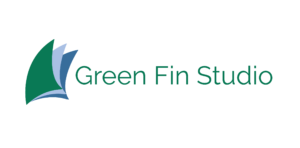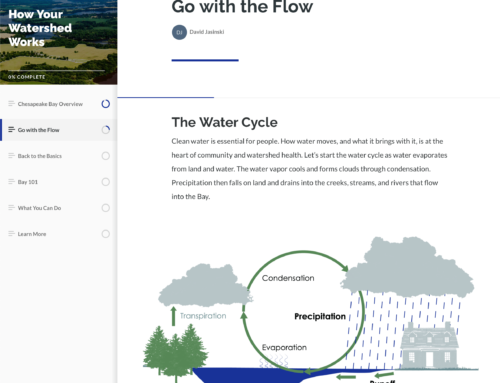
Illustration of Redhead grass seeds developed for the SAV restoration guide
March is seagrass awareness month AND women’s history month – we couldn’t let it go by without recognizing how those themes overlap in our office.
Seagrass refers to submerged aquatic vegetation (SAV) that lives in the bays, lagoons, and oceans of the world. They are vascular plants, just like the kind that we see on land, but they have adapted to life under the water; you may have seen their tranquil meadows swaying under the waves in shallow waters.
These plants deserve widespread kudos, as they provide numerous benefits to us and wildlife, including shelter for blue crabs, storage of carbon, and reduced shoreline erosion. Unfortunately, they are declining in many places; you can read an article from last month’s edition of the Bay Journal to learn more.
At Green Fin Studio, much of our work is directly or indirectly focused on seagrass protection and restoration. We are and have been raising awareness about seagrass to inspire more stewards. A component of our efforts for Changing Chesapeake related the health of our Bay’s grasses to a changing climate. This included data, infographics, and actionable steps everyone can take to reduce the stressors that seagrass beds are facing.
One of our latest seagrass projects focuses on empowering more people and groups to take action and begin restoring seagrasses in the Bay.

Illustration of Water Stargrass developed for the SAV restoration guide
We are creating a guide to restoring SAV in coordination with the Chesapeake Bay Program’s Habitat Goal Implementation Team. This will be a one-stop-shop resource for guidance at each step of a restoration project, including permitting, site selection, planting, and more. The best practices are based on extensive research, including a thorough review of the scientific literature and interviews with SAV experts.
Beyond the technical details that need to be addressed for a successful restoration project, we’ve included elegant illustrations and easy-to-understand graphics to make the document visually compelling.
As a small, woman-owned business, we are also thrilled that it is women’s history month. We would like to take this moment to acknowledge the female scientists we’ve gotten to work with through our SAV projects:
“The more you learn about it, the more you learn how much you don’t know,” says Dr. Cassie Gurbisz, an assistant professor at St. Mary’s College of Maryland.

Dr. Cassie Gurbisz
A series of opportunities led her from studying environmental science and art in college, to a career in education and research. As an environmental educator, her favorite part of her day was bringing kids to canoe and catch fish in the dense seagrass beds.
She had the opportunity to introduce the kids to what interested her in SAV, namely “exploring and experiencing a huge SAV bed first-hand,” during these excursions. She still enjoys building relationships with her students and teaching them not just about SAV, but also the research process.
Cassie charted her path by being open to opportunities. Rather than narrow-mindedly pursuing a specific goal, she focused on her writing, being a good colleague, and standing up for herself. She describes it as “presenting yourself in such a way that opportunities come to you.” A final kernel of wisdom from Cassie: you can be assertive and advocate for yourself while also being kind and compassionate – they are not mutually exclusive.
Brooke Landry, another of our seagrass collaborators, says “I want people to understand its value.” She has been working with seagrass since college, but she knew she wanted to be a marine biologist long before that.

Brooke Landry
Now the chair of the Chesapeake Bay Program’s SAV Workgroup and biologist at Maryland’s Department of Natural Resources, she still loves being in the water and out on boats, looking at the grasses and the critters that call it home or come to graze.
One of her favorite things about her job is connecting with people – Chesapeake waterkeepers, watershed groups, managers, and more. She spends a lot of her time doing outreach to help people understand seagrass and its value; without appreciating what seagrass does for us and the environment, people are less likely to care about protecting and restoring these vibrant habitats.
Brooke reflected on the importance of female mentors who understand and are supportive of other women, especially when fieldwork is required. She pointed out that long days in the field and on boats present “lots of challenges unique to women in the field.”
Her advice to other women in marine science is to have a very open mind; don’t back down from a challenge just because it takes you out of your comfort zone. For Brooke, what it all boils down to is two words: “Be brave.”
Green Fin Studio is honored to have the opportunity to work with regional scientists, including Brooke and Cassie. We appreciate their personal stories and their help in working with us to develop the Chesapeake Bay Program SAV restoration guide. May their stories and the guide inspire countless others to also be brave and take steps to restore ecosystems around the world.


[…] is right around the corner, and with it comes Seagrass Awareness Month. If you have an interest in SAV or coastal ecosystems in general, please check out the restoration […]